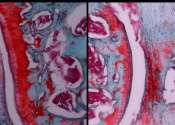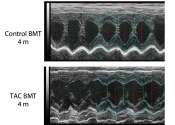Transplanting bone marrow stem cells from young mice into older mice found to slow development of Alzheimer's
A team of neurologists at Third Military Medical University, in China, has found that transplanting stem cells from the bone marrow of young mice into older mice led to a slowdown of the development of Alzheimer's disease.







